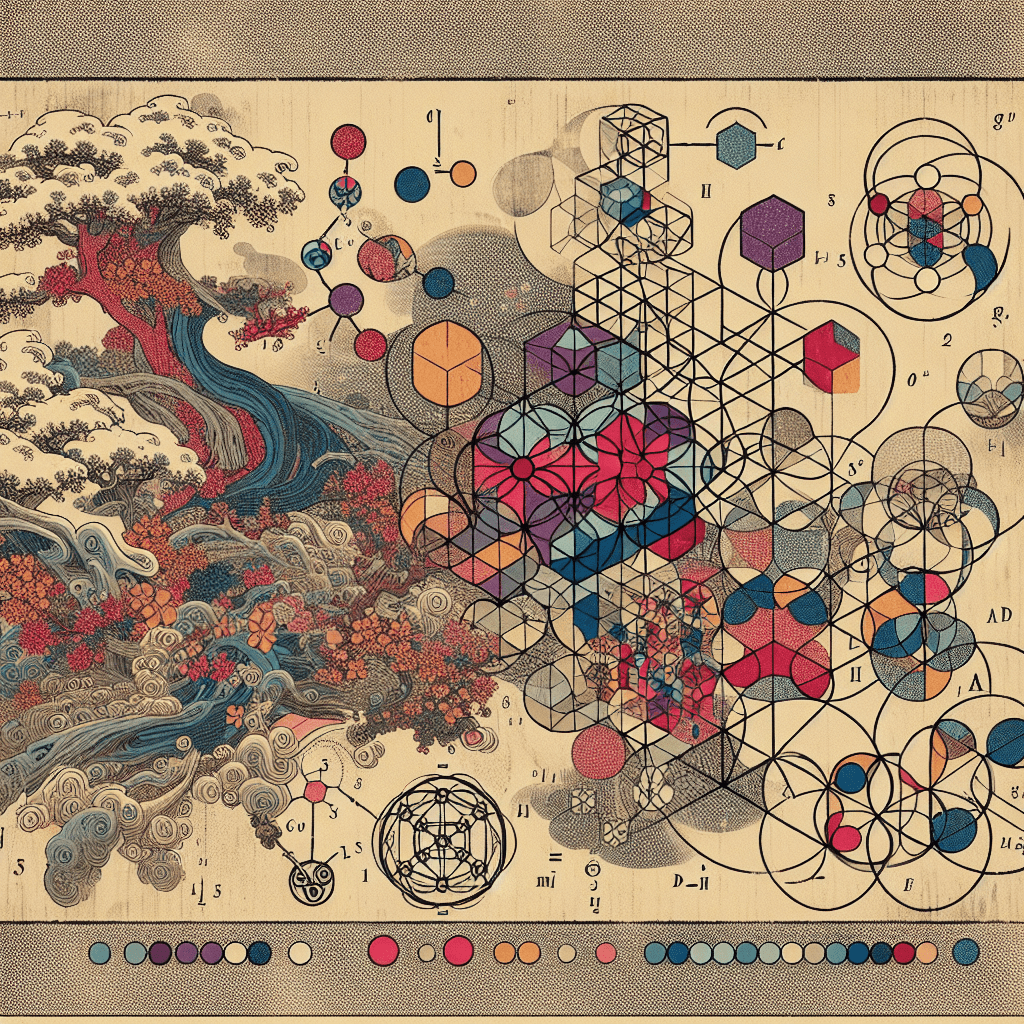Understanding Category Theory: A Journey into Abstract Mathematics
syndu | Aug. 31, 2024, 3:19 p.m.

Introduction to Category Theory
Title: "Understanding Category Theory: A Journey into Abstract Mathematics"
Summary: Introduce the fundamental concepts of category theory, its significance in mathematics, and how it provides a unifying framework for various mathematical structures.
Key Points:
- Definition of category theory
- Importance and applications in mathematics
- Overview of the Godai game elements as metaphors
Understanding Category Theory: A Journey into Abstract Mathematics
Introduction
Category theory is a branch of mathematics that provides a unifying framework for understanding and connecting various mathematical structures. It is often described as "the mathematics of mathematics" because it focuses on the relationships between different mathematical objects rather than the objects themselves. This blog post will introduce the fundamental concepts of category theory, its significance in mathematics, and how the Godai game elements can serve as metaphors to make these abstract concepts more relatable and visual.
What is Category Theory?
Category theory was developed in the mid-20th century by mathematicians Samuel Eilenberg and Saunders Mac Lane. At its core, category theory deals with categories, which consist of objects and morphisms (arrows) that describe relationships between these objects. A category is defined by the following components:
"...categories, which consist of objects and morphisms (arrows) that describe relationships between these objects."
- Objects: These can be any mathematical entities, such as sets, spaces, or groups.
- Morphisms: These are arrows that represent relationships or functions between objects. Morphisms must satisfy two properties:
- Composition: If there is a morphism from object A to object B and another from object B to object C, there must be a composite morphism from A to C.
- Identity: Each object must have an identity morphism that acts as a neutral element for composition.
Importance and Applications of Category Theory
Category theory has become a foundational tool in many areas of mathematics and theoretical computer science. Its significance lies in its ability to provide a high-level, abstract perspective that reveals deep connections between seemingly unrelated fields. Some key applications of category theory include:
- Algebra: Category theory unifies various algebraic structures, such as groups, rings, and modules, by focusing on their relationships.
- Topology: It provides a framework for understanding topological spaces and continuous functions.
- Logic and Computer Science: Category theory is used in the study of type theory, functional programming, and the semantics of programming languages.
Godai Game Elements as Metaphors
To make the abstract concepts of category theory more accessible, we can use the Godai game elements as metaphors. The Godai, or Five Elements, from Japanese philosophy—Earth, Water, Fire, Air, and Void—can help us visualize and relate to the components of category theory.
- Earth (Chi): Represents the objects in a category, providing a solid foundation.
- Water (Sui): Symbolizes the morphisms, flowing between objects and connecting them.
- Fire (Ka): Represents the composition of morphisms, transforming and building complex structures.
- Air (Fu): Symbolizes the identity morphisms, providing the essential element for composition.
- Void (Ku): Represents the abstract nature of category theory, encompassing the entire framework and its potential for unifying various mathematical concepts.
Conclusion
Category theory offers a powerful and elegant framework for understanding the relationships between different mathematical structures. By using the Godai game elements as metaphors, we can make these abstract concepts more relatable and visual. This introduction sets the stage for a deeper exploration of category theory, where we will delve into specific concepts and their applications in mathematics and beyond.
Stay tuned for the next post in this series, where we will explore "The Icosahedron: The Category of Categories" and how it represents the higher-level structure of categories within category theory.
Next Steps:
- Write Blog Post on The Icosahedron: The Category of Categories
- Write Blog Post on Points: Representing Objects in a Category
- Write Blog Post on The Origami Airplane: Morphisms and Their Role
- Write Blog Post on Composition of Morphisms: Building Complex Structures
- Write Blog Post on Functors: Mapping Between Categories
- Write Blog Post on Natural Transformations: Connecting Functors
- Write Blog Post on Limits and Colimits: Universal Properties in Categories
- Write Blog Post on Monoids and Monoidal Categories: Algebraic Structures in Category Theory
- Write Blog Post on Conclusion: The Power of Category Theory and Godai Metaphors
Goal:
To create a comprehensive and engaging content series that attracts and inspires readers, encouraging them to explore the abstract world of category theory through the relatable and visual metaphors of the Godai game elements.
Action Items:
- Research and Understand the Topic: Thoroughly research the specific topic to ensure a deep understanding of the concepts involved.
- Draft the Blog Post: Write a detailed and engaging blog post that explains the topic clearly and effectively, using the Godai game elements as metaphors where applicable.
- Create Visual Aids: Develop or source visual aids that help illustrate the concepts discussed in the blog post.
- Generate a Captivating Title: Create a title that is both informative and intriguing, encouraging readers to engage with the content.
- Review and Edit: Proofread and edit the blog post to ensure clarity, coherence, and correctness.
- Publish and Promote: Once finalized, publish the blog post and promote it through appropriate channels to reach the target audience.